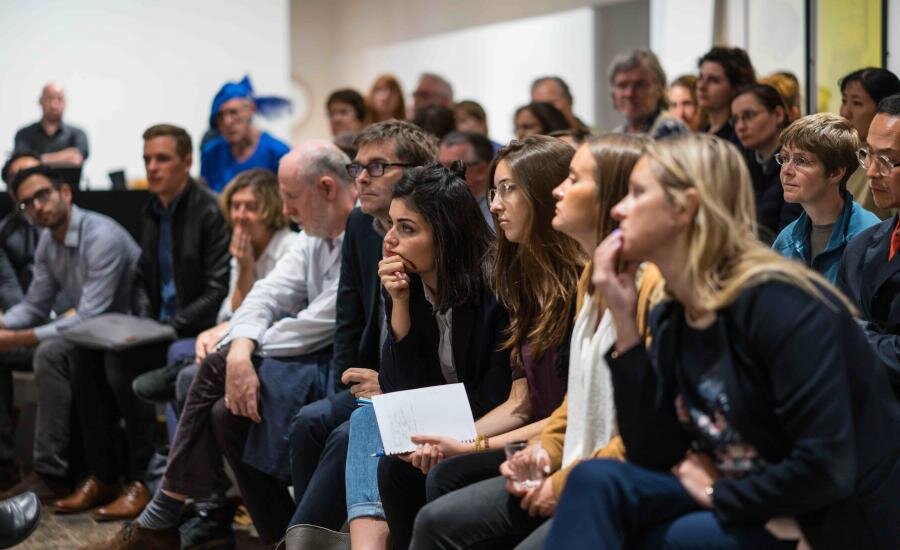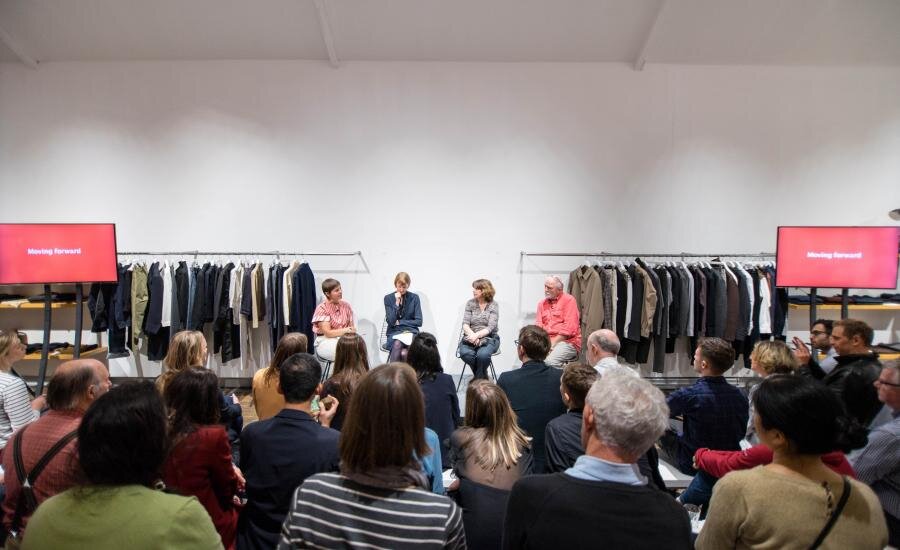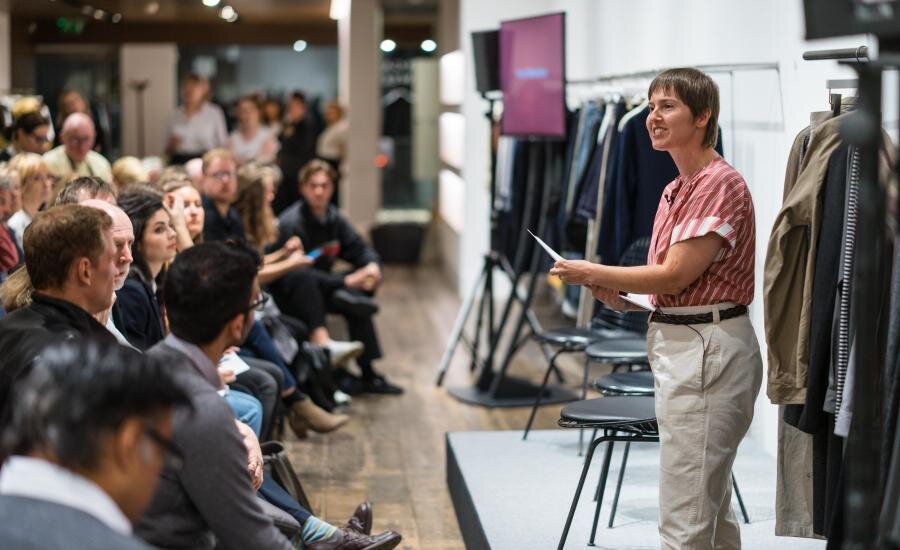Kicking up a stink: debating London’s problem with rubbish
A review of our annual debate featuring an expert panel discussing the ‘peak garbage’ threat
Chair: Vicky Richardson - writer and curator
Speakers:
Dr George McGavin - BBC presenter of The Secret Life of Landfill: a rubbish history
Biba Dow - Director at Dow Jones Architects - authors of the award- winning strategic report Rubbish In, Resources Out
Hazel Forsyth - Historian at Museum of London, curator of Junk exhibition
An Open City debate hosted at Margaret Howell, W1
Let’s talk rubbish: every year the British bury 12 million tonnes of waste in the ground – landfill, in other words – enough to fill 12 Wembley stadiums to the brim. And every Briton, over a lifetime, will create 30 tonnes of their own rubbish. And every day, across the whole world, we – humanity – dump 4 million tonnes of waste. Or in the words of Dr George McGavin, the entertaining and fact-filled host of the recent BBC programme, the Secret Life of Landfill, “we’re pretty close to peak garbage”, the dire consequences of which are still to be fully mapped out.
These were some of the fascinating details to emerge from the annual Open City debate at Margaret Howell on Wigmore Street this week which saw a panel of experts discuss this evolving, nightmarish problem, reflecting Margaret’s own passion to reduce waste in the fashion industry. Alongside Dr George McGavin, who provided the facts and figures behind ‘peak garbage’, architect Biba Dow shared her vision for a network of waste processing and recycling centres – community buildings at the heart of neighbourhoods throughout our cities that would upend how we think and relate to our everyday ‘rubbish’. And Museum of London curator Hazel Forsyth provided an overview of London’s historic relationship with trash (for example, London’s oldest surviving map only exists because it was etched on copper that was binned then recycled by Dutch painters who liked the quality of their paint on metal. The resultant paintings themselves, nothing special, have faded and since revealed their original use).
Each speaker made a short presentation with chairwoman Vicky Richardson then posing provocative questions to each of them: can’t we just use technology to mitigate waste problems without having to reduce consumption? (“Technology can help but we need to begin to understand – or reacquaint ourselves with – materials and their properties again” – Hazel). Aren’t jute bags more ‘polluting’ than plastic bags because of their embodied energy? (“The problem is more that plastic bags don’t biodegrade” – Biba). And why shouldn’t we be able to have access to anything we want, wherever we are? (“Because there’s a finite pool of resources!” – George).
Biba also explained that in London, despite Sadiq Khan’s pledge to 100 per cent waste recycling by 2026 (“Impossible” – George), a major problem remains: each borough has its own approach to waste and recycling, reflecting diverse packaging approaches by manufacturers such as those who insist on using black plastic (to make food look better apparently) but which, as George pointed out, “you can’t recycle.”
Rounding up, following a lively session with audience questions, Vicky asked each speaker to suggest a simple way forward for each of us to usefully influence change in waste culture. “Move away from built-in obsolescence”, said Hazel. “An end to fast fashion”, said George. The funniest – and perhaps the most effective suggestion however was Biba’s: “unpack whatever you’ve bought in the shop and leave the packaging with them!”
BIOGRAPHIES:
Speakers
Dr George McGavin is an Honorary Research Associate at the Oxford University Museum of Natural History and a Research Associate of The Department of Zoology of Oxford University. He is also a Fellow of the Linnean Society, The Royal Geographical Society and an Honorary Fellow of The Society of Biology. George has written numerous books on insects and other animals. George regularly speaks to audiences about insects, ecology, evolution, conservation and exploration. George is BBC presenter of The Secret Life of Landfill: a rubbish history.
Biba Dow studied architecture at the University of Cambridge. In 2000, she established Dow Jones Architects with Alun Jones. Biba has worked on a range of complex arts and heritage buildings. She has been the project director for the refurbishment of the crypt at Christ Church Spitalfields, and the new heritage centre at the grade 1 listed St Mary Magdalene. She has also led a number of public regeneration and research projects for the GLA includingRubbish In, Resources Out, an award-winning strategic design report investigating urban waste treatment facilities.
Hazel Forsyth is a social historian and senior curator of the Medieval and Early modern Collections at the Museum of London, and curator of Junk, an exploration of how Londoners through history have recycled and repurposed their rubbish. She is a Fellow of the Society of Antiquaries, a Fellow of the Royal Society of Arts, a Liveryman of the Worshipful Company of Goldsmiths’ and a Liveryman of the Worshipful Company of Pewterers’. She has also written a number of books tracing London’s hoards of buried artefacts.
Chair
Freelance writer and curator Vicky Richardson started her career as an architectural journalist and has been editor of Blueprint, director of architecture, design and fashion at the British Council, and more recently, associate director of the London School of Architecture. She has a degree in architecture from the University of Westminster and is an Honorary Fellow of the RIBA.





